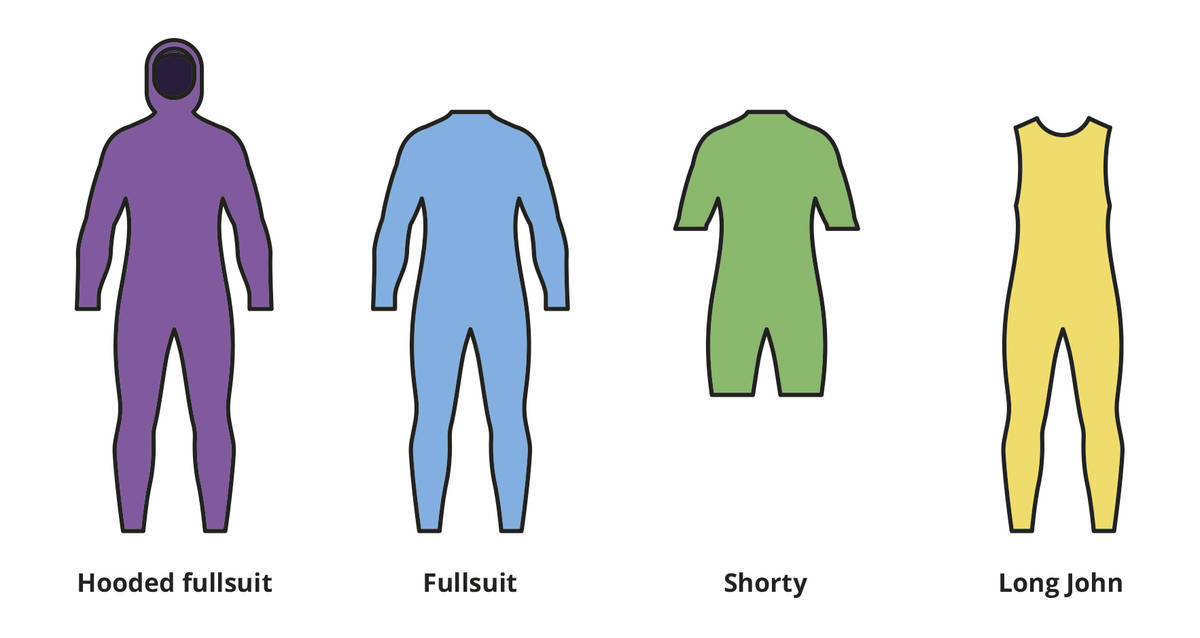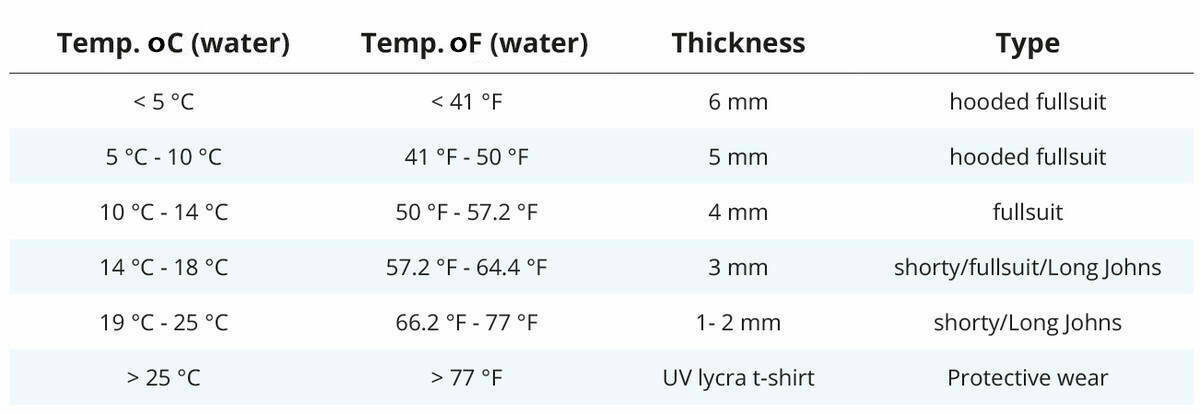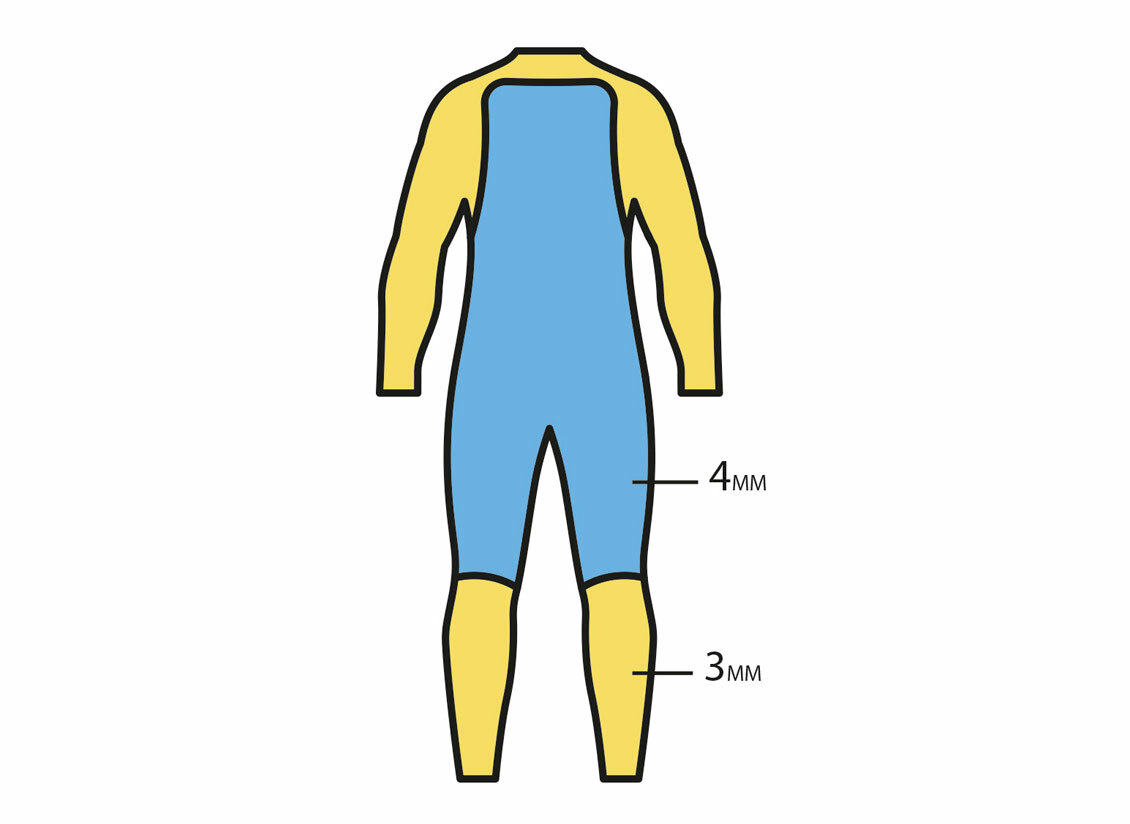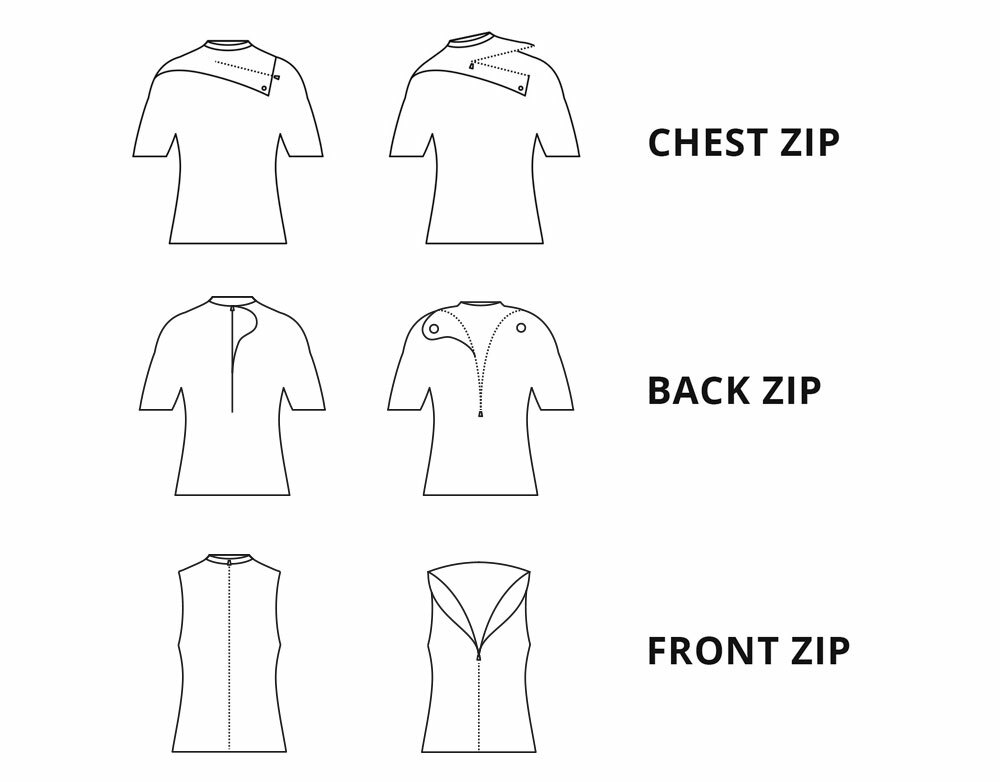Purchasing a Wetsuit
When selecting your initial or subsequent wetsuit, several crucial considerations should be made, such as:
- the intended use and location
- thickness
- style
The wetsuit is neoprene attire designed for water sports like surfing, wakeboarding, kitesurfing, among others, as well as leisure activities such as tubing, to keep you warm and comfortable in the water. Children’s wetsuits are frequently utilised as effective protective layers against sun exposure and cold water.
Many people mistakenly believe that wetsuits keep them dry, whereas they actually trap a fine layer of water that your body warms.
1. Selecting Wetsuit Type and Thickness According to Temperature as a Critical Factor
Before delving into the specifics, it's helpful to initially consider the water sport you engage in. Typically, there are four predominant wetsuit types: hooded fullsuit, fullsuit, shorty (also known as spring suit), and Long Johns. Variations exist, such as a full suit with short sleeves or a shorty with long sleeves.

Given that the principal function of your wetsuit is warmth, selecting its type largely hinges on the water/air temperature where you intend to use it. The chill factor is equally significant.
For instance, wind sports such as surfing, kitesurfing, and windsurfing require thicker and consequently warmer wetsuits. However, they must also be flexible and robust, necessitating a high-quality wetsuit. Wave skimboarding follows a similar requirement. Generally, in these categories, it's advisable to start with a full suit and subsequently acquire a long-sleeve/short-sleeve shorty.
Alternatively, inland surfing generally takes place in warmer, more tranquil waters, reducing the need for larger suits (e.g., wakeboarding, flatland skimboarding, waterskiing). Here, a shorty (long/short-sleeved) is a suitable first purchase, followed by a fullsuit for winter or off-season wear.
SUP and kayaking are commonly performed in a Long John (plus a windproof layer, if necessary) due to the constant shoulder and arm movement, which can be more challenging and uncomfortable in a thick fullsuit.
We have prepared a table to aid in selecting the right wetsuit thickness and type depending on the water conditions you will encounter. Therefore, researching your location in advance is critical.
It's vital to recognise that while the chart provides recommendations, wetsuit choices also vary based on individual requirements and preferences. Ultimately, being warm and comfortable is essential!

2. Understanding Wetsuit Thickness
The suitability for temperature variations depends on activity level, external temperature, and body weight. Thus, bear these factors in mind. The UV Lycra suggested for the warmest conditions is a special t-shirt designed to shield you from the sun.
Wetsuits don’t always come with a single thickness number. So what does a two-number (or even three-number) configuration mean, divided by a slash?
The primary number signifies the neoprene thickness at the torso/hip region, while the figure following the slash denotes thickness at your arms and legs. In the case of three figures, the first indicates torso thickness, the second the legs, and the third the arms. For instance, a 4/3 mm wetsuit corresponds to 4 millimetres at the torso and 3 millimetres over the limbs. A 4/3/2 mm wetsuit has 4 mm at the torso, 3 mm at the legs, and 2 mm on the arms. This design maintains core temperature comfortably while ensuring freedom of movement for your arms and legs.

3. Size and Design: A Matter of Importance
Size
Selecting the appropriate wetsuit size is crucial because a snug, close fit enhances insulation. A well-fitting wetsuit should resemble a second skin and preserve a fine water layer between you and the suit (without being so tight as to hinder blood circulation). To assess wetsuit fit before using, lift your arms over your head and stretch. It should slightly restrict movement without preventing it entirely. Execute several squats and paddle your arms in the air; if possible, the fit is likely correct.
The wetsuit should always be snug around the neck (yet not constrictive) as this is a common point for water ingress.
Additionally, wetsuits are available in standard sizes - XS, S, M, L, XL, XXL, or their UK equivalents - 4, 5, 8, 10, 12, 14. The only potential issue you might encounter is if ’S’ or ’T’ follows the size indicator, signifying the short and tall variations of the standard size. For example, ST indicates size small/tall.
Design (Zippers and Seaming)

Regarding design, we already stressed the importance of how much water leaks in around the neck, for example. Zipper configurations and the seaming are crucial design attributes impacting the level of water ingress/egress. The less, the better.
Chest zips perform best in terms of blocking water as it’s harder for water to ingress or egress. This design is not only warmer but is also more recent;
Back zips allow straightforward entry for both you and the water, and they can make the suit feel slightly cooler. This traditional design makes donning the wetsuit easier and usually comes at a lower cost;
Front zips afford both you and the water uncomplicated access and these wetsuits generally feel cooler compared to others.
Seaming, too, is pivotal in keeping you warm while reducing water ingress.
Flatlock stitching involves stitching together neoprene panels externally and internally.
Sealed - signifies the panels are blind stitched and glued to prevent water entrance, essential for lower temperatures.
Sealed and taped implies that after stitching and gluing, tape is applied internally over the glue to entrap heat.
4. Attributes of a High-Quality Wetsuit
Much like any other product, neoprene varies in quality. High-quality neoprene retains ample air, providing better insulation and warmth. Additionally, it should be durable and elastic.
Essentially, a superior wetsuit minimises water permeability, fits and insulates effectively, plus offers stretch and durability. Typically, more stretch signifies reduced durability, but an exceptional wetsuit can embody both traits. The finest wetsuits are usually 1 mm thinner, yet sturdy, offering more stretch and comfort while maintaining similar insulation as thicker ones due to quality neoprene.
Prepared for the Water?
To encapsulate:
- Firstly, consider the sport type and location where you will engage
- Then, account for the water temperature
- Select an appropriate size
- Opt for a fitting design
And lastly - enjoy yourself!
